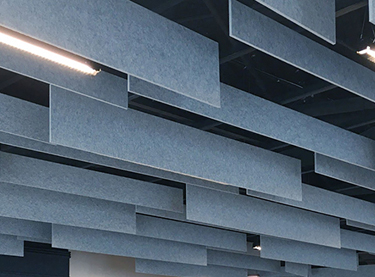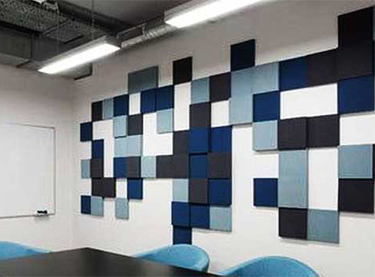Is Vinyl Sound Barrier a good sound barrier?
2024-06-19
In the battle against unwanted noise, sound barriers emerge as our valiant defenders. But with a multitude of options available, choosing the right one can be a challenge. This article delves into the world of Vinyl Sound Barriers, specifically Mass Loaded Vinyl (MLV), to explore its effectiveness and determine if it's the right fit for your needs.
What is a Vinyl Sound Barrier (MLV)?
A Vinyl Sound Barrier, more commonly known as Mass Loaded Vinyl (MLV), is a dense, limp material typically composed of polyvinyl chloride. Unlike rigid soundproofing materials, MLV offers a flexible solution for dampening sound transmission.
How Does MLV Work as a Sound Barrier?
MLV's effectiveness lies in its ability to:
Increase Mass: The primary function of any sound barrier is to add mass to a structure. MLV's high density significantly increases the mass of a wall or ceiling, making it more difficult for sound waves to pass through.
Dampen Vibrations: Sound waves travel by causing vibrations in materials. MLV's limp nature helps dissipate these vibrations, reducing the overall sound transmission.
The Advantages of Using MLV Vinyl Sound Barriers:
Effective Sound Reduction: When installed correctly, MLV can significantly improve the Sound Transmission Class (STC) rating of a wall or ceiling, translating to a noticeable reduction in unwanted noise.
Versatility: MLV can be applied to various surfaces, including walls, ceilings, and even floors (with proper support structures). This makes it a suitable option for diverse soundproofing applications.
Easy Installation: Compared to some soundproofing materials, MLV is relatively easy to install. It can be cut, rolled, and attached using standard construction techniques.
Cost-Effective: MLV offers a cost-effective solution for soundproofing compared to some alternative materials.
Additional Benefits: MLV also provides some thermal insulation properties and can help improve the overall fire resistance of a structure.
Applications for MLV Vinyl Sound Barriers:
Studio Projects: Recording studios rely heavily on soundproofing to create a pristine recording environment. MLV is a popular choice for studio walls and ceilings due to its effectiveness in dampening sound and reducing noise transmission.
Movie Theaters: For an immersive movie experience, minimizing outside noise is crucial. MLV can be used in movie theater walls to create a soundproof barrier between the auditorium and the outside environment.
Residential Applications: MLV can be a valuable tool for soundproofing residential spaces, such as home theaters, music rooms, or even shared walls in apartments. It can help reduce noise transmission between rooms, creating a more peaceful living environment.
Limitations to Consider with MLV Vinyl Sound Barriers:
Not a Standalone Solution: While effective, MLV is often most beneficial when used in conjunction with other soundproofing materials like decoupling layers and sound absorption panels.
Higher Frequency Sound: MLV is particularly effective at blocking lower-frequency noise. For higher frequencies, additional soundproofing measures might be necessary.
Installation Expertise: While generally considered easy to install, achieving optimal soundproofing results with MLV may benefit from professional installation expertise.
The Verdict: Is a Vinyl Sound Barrier (MLV) Right for You?
MLV Vinyl Sound Barriers offer a compelling solution for various soundproofing needs. If you're looking for an effective, versatile, and cost-effective way to reduce noise transmission, MLV is a strong contender. However, it's crucial to consider your specific needs and potential limitations before making a decision. Consulting with a soundproofing professional can help you determine if MLV is the right choice for your project and ensure optimal results.
























































